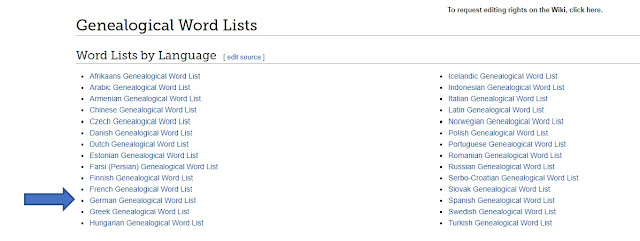Lisa’s first presentation was entitled Ten Ways to Jumpstart Your Eastern European Research. In this presentation Lisa discussed her list of 10 ways to get started on your research. These 10 ways not only applied to Eastern European research but any research you are embarking on and included; talk to your family, plant your family tree online, map out your ancestral towns/villages, document your work, utilize Family Search, watch videos, try a new database or search technique, share your brick wall, attend a conference/workshop or seminar, and hire a pro.
- Lisa talked about Videos available on Family Search under the Learning Center and I tried the following 15 minute video about Irish Research.
- I also watched a YouTube Ancestry video:
https://www.youtube.com/watch?v=uZnshl_fxmI
Whatever you are researching, no matter how experienced or inexperienced you are, these are both great ways to help you with your research and try out some new ideas. And the best part is these videos are available for free.
- Lisa discussed the importance of keeping a Research Log. I like to try out different Research Logs recommended by speakers and from my own personal experience use different research logs for different purposes. I tried Lisa’s research log for an ancestor I have yet to really research or write about to see what I have already found, where my gaps are and what else I still what to search for:
(Click on images to enlarge)
Lisa reminded us to also attend ethnic conferences. I have attended two and learned a great deal about specific ethnic research and made some great connections with others researching the same ethnic groups.
Lisa also discussed the great advantage to Immersion Genealogy where you can bring your research full circle when you can visit an “ancestral homeland to walk in your ancestors’ footsteps, and perhaps meet up with long-lost cousins” as she has been able to do.
Lisa’s second presentation was entitled Crossing the Pond: Successful Strategies for Researching Eastern European Ancestors. Lisa discussed the importance of identifying your ancestor’s ‘original’ surname as it was before they immigrated, locating the ancestral village, information on researching in Eastern Europe, where to go to get help with reading and interpreting church and civil records in languages we are not familiar with, lists of websites as part of an Eastern European Genealogy Research Toolkit, and select websites for countries in Eastern Europe. Lisa also discussed the importance of making connections in various FaceBook groups related to genealogy in the areas you may be researching and for meeting cousins.
Lisa talked about the importance of learning the headings on documents in countries where you may not know the language. Family Search has Word Lists to help with this. I not to start researching my German ancestors in Germany and have hesitated because of the language barrier. I decided to start by looking for a word list and found the following Genealogical Word Lists at FamilySearch under the Help Center:
Lisa also informed us that Family Search and YouTube have language tutorial videos and that Family Search has Community Groups that will help with translations. I have been fortunate in the past to also find people willing to help with a translation in FaceBook groups. Read about my experience in my post Amanuensis Monday-A Will but…Whose Signature is That?.
What a great presentation and so many new tips that I can apply to my own research despite the fact that I have no Eastern European ancestors. Thank-you Lisa!
If you have any corrections, additions or stories to share I look forward to hearing them.
Enjoy the journey,
Debby







Thank you for the synopsis. It sounds like it was a very informative presentation. I didn’t know there was a word list on Family Search. Definitely good to know. It seems that even when we attend a lecture that we think doesn’t apply to our ancestors, we will always still learn something.
ReplyDeleteThank-you Diane! Yes, I always seem to learn something new to try out. There is just so much out there.
Delete